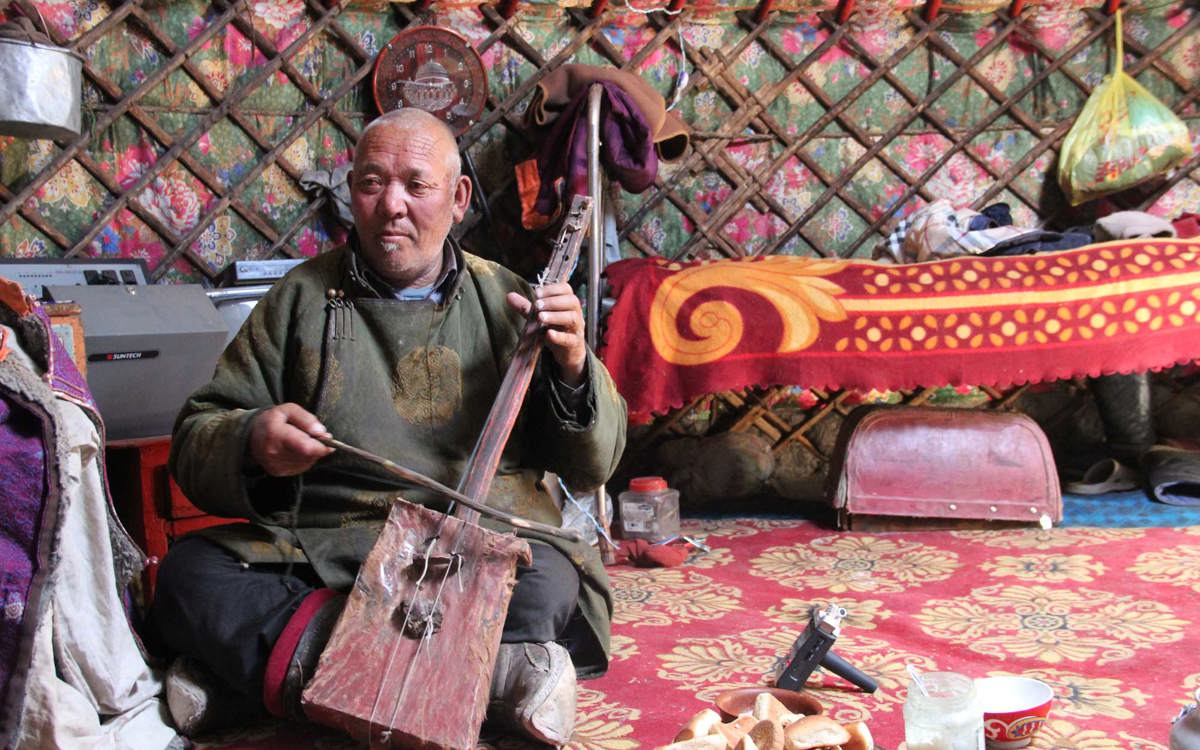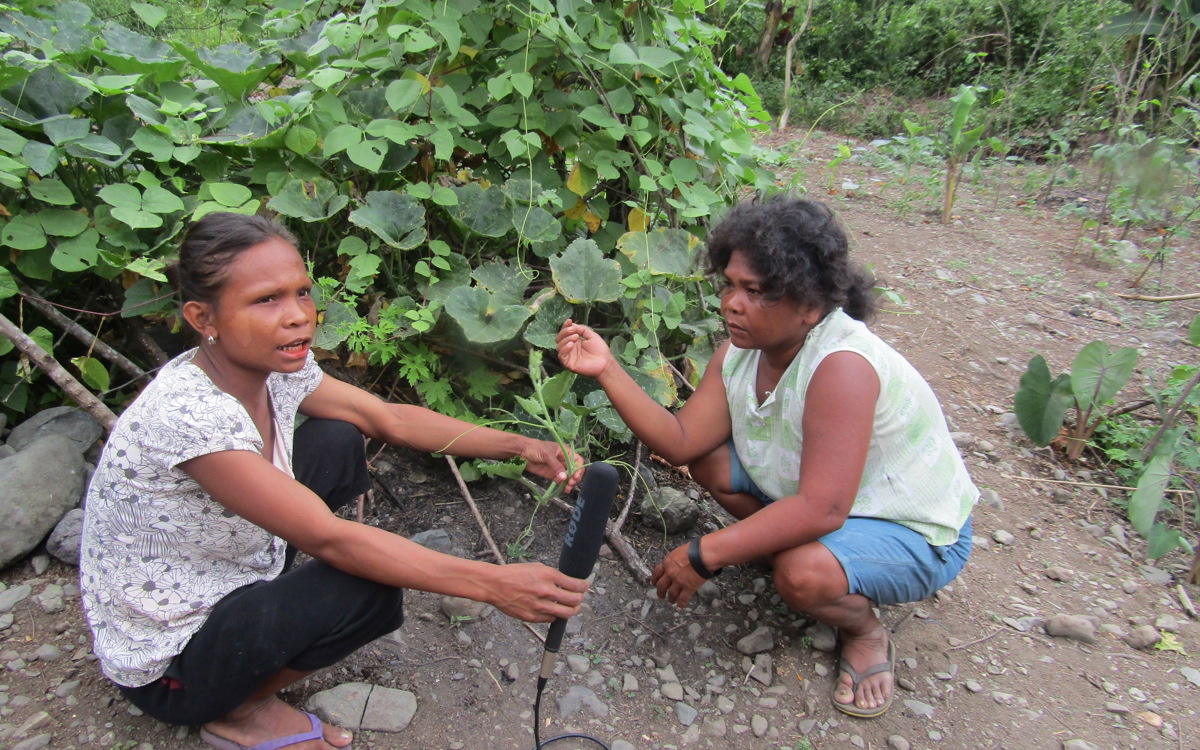The creativity of the human mind is embodied in our many languages. By Mandana Seyfeddinipur, SOAS University of London, UK

University researchers are building a lasting online record of the world’s linguistic diversity and, in doing so, preserving humanity’s intangible cultural heritage.
By Mandana Seyfeddinipur, SOAS University of London, UK
Sixto is in his 90s and lives in the Bolivian Amazon. His brother died a few years ago and, since then, Sixto has had no one to talk to in his native language, Tinigua. With his children and grandchildren, his neighbours and friends, he has to speak Spanish.
Sixto is Tinigua’s last known speaker. With him, Tinigua will fall silent. With him, the centuries of knowledge, belief systems, and ways of life that are encoded in the language will be lost forever.
Tinigua is not the only language that is disappearing. Linguists estimate that by the end of this century, half of the estimated 7,000 languages spoken today will have fallen silent. This means that every other week, a language is lost.
Of course, the beauty of languages is that they come and go, that speakers modify and adapt to their changing circumstances. Latin is not spoken anymore, but we have French, Spanish, Italian, and Romanian. Basque is an enigma as we do not know how it got there, and Finnish has come from Hungary. But what is happening today is unprecedented. The sheer speed at which these changes are happening has increased so dramatically that some compare it to the fifth mass extinction, when the dinosaurs died out.
Not only has the rate of change increased, we also see a difference in the kind of shift taking place: major languages are now being adopted at the expense of smaller ones. Just 23 languages account for more than half the world’s population, while the remaining 3.75 billion people speak the other 6,977. (This number is only an estimate. The total number of languages is in constant flux and we are missing data on many.)
Now, while you are reading this, have you been thinking: wouldn’t it be better if we all spoke the same language? Wouldn’t that make our lives easier because nothing would be lost in translation and we wouldn’t have so many misunderstandings? The first answer that comes to mind is: are you married? Speaking the same language does not mean fewer misunderstandings, right? The second response is: sure, which language should we all speak?! How about Rotokas, a language spoken on the island of Bougainville, made up of only 12 sounds? Or what about a Turkic language that has different ways to express whether you have directly witnessed an event or only heard about it? Or of course, it has to be Chinese, the largest language in the world! Mandarin Chinese is a tonal language, meaning that a word’s meaning can change depending on the pitch at which it’s spoken. This is very hard for an English speaker to hear or to produce, but we can work hard and learn, no?
Ask a multilingual about words they cannot translate and you will hear lots of beautiful examples, such as the Japanese word komorebi: a sort of scattered light effect that happens when light shines through trees. But let’s look beyond the romantic examples. After all, why does it have to be one or the other?
The creativity of the human mind is embodied in our many languages. Every language expresses the unique knowledge, history, and worldview of its speaker communities through their words, phrases, metaphors, and syntactic structures. Why did humanity create 7,000+ languages? Our closest relatives, the apes, can communicate – as can bees, whales, and so forth – but they are not capable of language. Their communication is restricted to limited domains such as food sources and to the here and now. Only humans are capable of language in its richness and complexity.
This is humanity’s intangible cultural heritage. Think about the treasures in the British Museum. Millions visit every year to learn about humanity, to learn about themselves as humans, and about how people lived, worshipped, fought, and developed. Yet our intangible cultural heritage and knowledge is vanishing in front of our eyes, as the voices that can tell its stories go unheard and unrecorded.

At SOAS University of London, we are working to address this. Our Endangered Languages Documentation Programme - founded in 2002 with a generous donation from the Arcadia Fund, a charitable fund of Lisbet Rausing and Peter Baldwin - aims to support the documentation of as many endangered languages as possible.
We give linguists and researchers the support, training, and equipment they need to work with communities around the world to record not only the languages and knowledge systems that exist there, but also their views of the past, their myths, and their means of transferring knowledge. We also provide training in language documentation to local scholars and communities in areas where disappearing languages are spoken, from Ethiopia and Cameroon to Siberia and the Yunnan province of China.

These materials – both audio and video – are brought back to London, where they are preserved, archived, and made freely available online in our digital archive – the Endangered Languages Archive at SOAS.
Over 450 projects have been funded worldwide to date. These include the only major documentation of the Great Andamanese languages of India’s Andaman Islands by linguist Anvita Abbi. The Andamanese people are believed to be descendants of one of the oldest human cultures on Earth, having lived on the islands for more than 65,000 years. During the project, the last speaker of the Bo language died and the archive at SOAS holds the last recordings of her words.
Knowledge should belong to all. Around the world, scholars supported by the Endangered Languages Documentation Programme are creating a lasting, freely accessible online record of the world’s linguistic diversity – and maybe, in a way, a sort of digital Rosetta Stone. As the UN’s International Year of Indigenous Languages gets underway, our work is central to this theme. But one question: what do we mean by indigenous?
Dr Mandana Seyfeddinipur is Director of the Endangered Languages Documentation Programme at SOAS University of London, UK.
Image (top) by Tsendee Yunger
